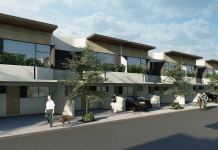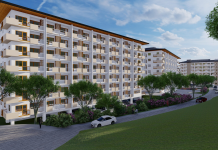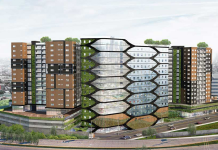Skyscrapers are becoming more common place in Southeast Asia’s major metropolises. Kuala Lumpur and Singapore were the first cities to really go vertical, but they have since been joined by Bangkok and Jakarta as well as Ho Chi Minh City, Hanoi and Metro Manila to some extent. Even the skyline of Phnom Penh is being transformed as skyscrapers slowly populate the Cambodian capital.
What’s surprising to some is just how fast the region’s skylines have risen. Most of these tall towers in places such as Bangkok and Ho Chi Minh City are relatively new. Of the 50 tallest skyscrapers in Southeast Asia, only seven were completed prior to the year 2000 with most being started well before the Asian Financial Crisis of 1997.
The crisis would halt work on most skyscrapers for the next 12 years as only three of the 50 tallest buildings in Southeast Asia opened between 1999-2009. The start of the 2010s would bring with it the golden age of skyscrapers in the region with a staggering 80 percent of skyscrapers completed after 2009. A few of these towers are among the most unique buildings in the world.
The distribution of skyscrapers isn’t even as countries have developed at their own pace. When you look at the construction of buildings 150+ meters, there are certainly some Southeast Asian cities that have grown quicker than others.
150+ meter buildings in Southeast Asia’s major cities

| City | 150+ meter buildings completed | 150+ meter buildings under construction |
| Bangkok | 92 | 15 |
| Jakarta | 91 | 16 |
| Singapore | 91 | 2 |
| Kuala Lumpur | 78 | 27 |
| Ho Chi Minh City | 16 | 4 |
| Hanoi | 9 | N/A |
| Manila | 7 | 2 |
| Phnom Penh | 1 | 1 |
*All data from the Council on Tall Buildings and Urban Habitat
While these totals pale in comparison to places like Hong Kong, New York, Shanghai and Dubai, they are still impressive in their own right. Especially when you consider that the majority of these have been completed in the last ten years.
This growth is one reason why we’re releasing the first Dot Property Southeast Asia Skyscraper Annual found on in the latest issue of Dot Property Magazine. Tall buildings are now commonplace in the region and this feature is designed to provide an overview of what’s up.
We won’t be simply ranking the buildings in each country by height since that information is already out there. Instead, the Dot Property Southeast Asia Skyscraper Annual will offer a look at some of the tallest, iconic and unique buildings. This includes both completed towers and a few in the pipeline.
A couple of things to take note of. Firstly, the Dot Property Southeast Asia Skyscraper Annual doesn’t cover Myanmar, Laos or Brunei. That’s because there aren’t buildings that can truly be defined as skyscrapers in these countries. Of this list, Brunei is the only country to have a skyscraper with the Ministry of Finance building in Bandar Seri Begawan standing at 120 meters. Meanwhile, Myanmar has a couple of proposed projects that could bring skyscrapers to the country within the next decade.
Finally, data on these skyscrapers has been located from various sources including the Council on Tall Buildings and Urban Habitat, Emporis and building developers. There are some instances where these sources disagree on the exact heights of a building, but we have worked hard to ensure all information is as accurate as possible.
The only way to read the Dot Property Southeast Asia Skyscraper Annual in full is to check out the special double issue of Dot Property Magazine which is out now. Click here to download it.
Dot Property Magazine, Asia’s premier real estate magazine, is out now. You can read it online by clicking here. If you prefer to read it on the go, download the FREE Dot Property Magazine app. You can find it in the Apple Store and Google Play.




















